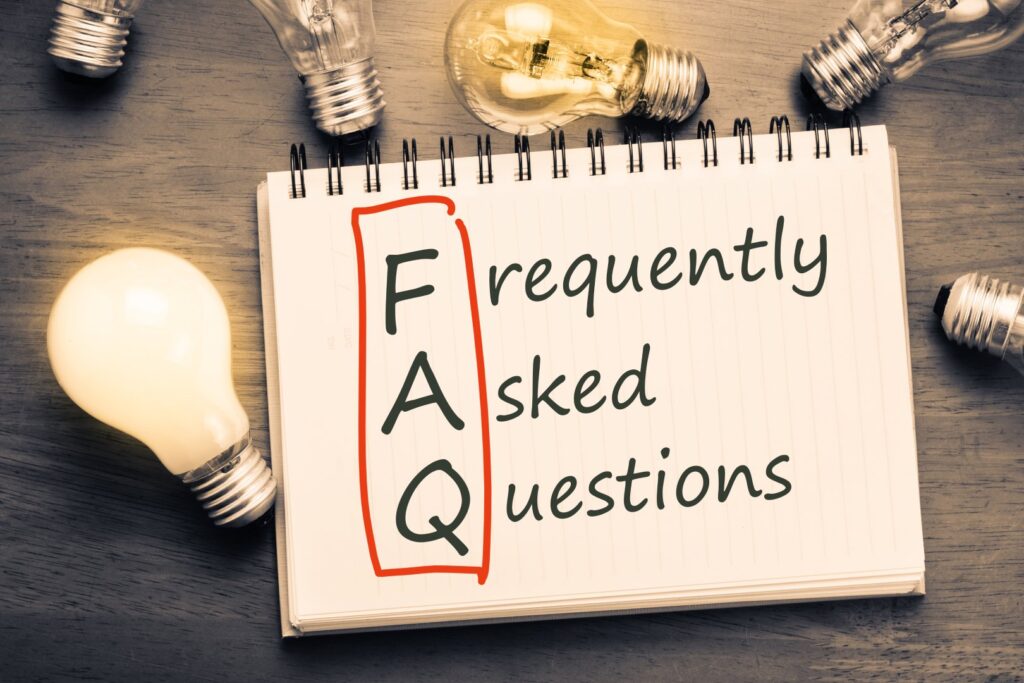
Are Your FAQs Failing to Hold Attention? Here’s How to Fix Them
An FAQ page should be more than just a list of questions and answers. It should be a dynamic, user-friendly resource that provides clear information while maintaining engagement. Many businesses overlook the potential of an FAQ section, resulting in a dry, uninspiring page that does little to enhance the user experience.
A well-structured FAQ page can streamline customer support, strengthen website usability, and even improve search rankings. But how can businesses move beyond basic responses to create something that truly adds value?
Why an FAQ Page is a Business Essential
An FAQ page plays a critical role in enhancing customer satisfaction and reducing support queries. It provides instant answers, saves time, and ensures customers can navigate a website with ease.
At i-Q&A, we understand the importance of an engaging FAQ section. Our expertise in structuring and optimising FAQs ensures that businesses provide the best possible user experience while enhancing their online presence.
Benefits of an Effective FAQ Page:
- Enhances the user experience – Customers find answers without contacting support.
- Reduces workload for support teams – Fewer repetitive queries mean staff can focus on complex issues.
- Strengthens credibility – A well-maintained FAQ page reassures customers of a business’s expertise.
- Improves website navigation – Organised sections make it easier for visitors to locate key details.
- Boosts SEO performance – FAQ pages structured with natural language queries can improve search rankings.
However, simply listing questions and answers isn’t enough. To maximise engagement, the design, structure, and tone must be carefully considered.
What Makes an FAQ Page Stand Out?
A successful FAQ page offers more than standard responses. It should be informative, well-organised, and visually appealing. Here are key elements to consider:
1. Address the Most Common Questions First
Start by identifying the most frequently asked questions. Review customer emails, support queries, and social media interactions to determine the most relevant topics.
2. Organise Questions Logically
Grouping questions into categories improves readability and helps users navigate more efficiently. Common sections include:
- General Information – Contact details, business hours, policies
- Products and Services – Features, availability, and customisation options
- Orders and Payments – Delivery, refunds, and billing queries
- Technical Support – Troubleshooting, account management, and updates
Placing the most common questions at the top ensures users find essential details quickly.
3. Keep Answers Concise and Clear
Avoid long, complex responses. Answers should be direct and written in plain language, eliminating unnecessary jargon. If further detail is required, link to relevant blog posts, guides, or service pages.
4. Use Visuals to Improve Engagement
Adding images, icons, or short explainer videos can clarify complex topics and make the page more appealing. Visual elements also enhance comprehension, particularly for technical or step-by-step explanations.
5. Ensure Easy Navigation
A cluttered FAQ page can be frustrating to use. The design should prioritise accessibility:
- Expandable lists – Allows users to click on a question to reveal the answer.
- Search bar – Enables quick access to relevant topics.
- Sticky navigation – Keeps category headings visible while scrolling.
- Back-to-top buttons – Prevents excessive scrolling.
6. Maintain a Brand-Appropriate Tone
The FAQ page should reflect the business’s identity. Whether professional, conversational, or technical, maintaining a consistent tone ensures clarity and aligns with customer expectations.
Best Examples of FAQ Pages That Work
Looking at successful FAQ pages can provide valuable insights into effective structuring and design. Below are some standout examples:
TotalEnergies
TotalEnergies enhances usability by incorporating a search function, enabling visitors to find answers quickly. Customers can also leave feedback or request additional support when needed.
Club Med
Club Med integrates brand-specific design elements, ensuring the FAQ page remains visually consistent. Sections are clearly divided, and the use of images improves engagement.
Clarins
Clarins groups FAQs into distinct categories such as Orders, Delivery, and Returns. The page also provides links to related resources, making it easier for customers to find additional information.
DPD
DPD streamlines customer support by implementing an interactive FAQ experience. This feature automates responses, reducing customer service requests by over a million per year.
Shopify
Shopify’s Help Centre centralises FAQ content, separating general business information from detailed support resources. This structure simplifies navigation for new and existing customers alike.
How to Build an FAQ Page That Customers Will Use
Step 1: Research Customer Needs
Compile common queries by reviewing support emails, chatbot interactions, and customer feedback. Analysing competitor FAQ pages can also highlight any missing information.
Step 2: Choose the Right Format
Decide on a layout that best suits the type of information being presented:
- Expandable lists – Ideal for keeping the page tidy while allowing users to view answers selectively.
- Searchable databases – Best for large FAQs with numerous topics.
- Classic text layout – Suitable for smaller businesses with a limited number of FAQs.
Step 3: Make it Mobile-Friendly
Many users will access the FAQ page via smartphones, so it should be optimised for smaller screens. Ensure:
- Text is easily readable without zooming.
- Links and buttons are large enough to tap.
- The layout adjusts seamlessly across devices.
Step 4: Keep Content Up to Date
As customer needs evolve, so should the FAQ page. Regular updates ensure information remains relevant and accurate. Key areas to review include:
- Changes in pricing or policies.
- New service offerings.
- Adjustments based on customer feedback.
Step 5: Provide Alternative Support Options
Even with a well-structured FAQ page, some users will still require additional support. Ensure there are clear pathways to:
- Live chat for real-time assistance.
- Contact forms for detailed inquiries.
- Email or phone support for urgent issues.
The Role of FAQs in Customer Support
A strong FAQ page acts as a self-service hub, allowing customers to find answers instantly. Businesses that invest in well-structured FAQ sections experience reduced support queries and improved customer satisfaction.
Final Thoughts
At i-Q&A, we specialise in creating FAQ pages that deliver real value. By structuring content effectively, incorporating engaging elements, and optimising for SEO, businesses can enhance customer experience while reducing support requests. Investing in a well-maintained FAQ page ensures visitors find the information they need quickly, building trust and improving website usability.
